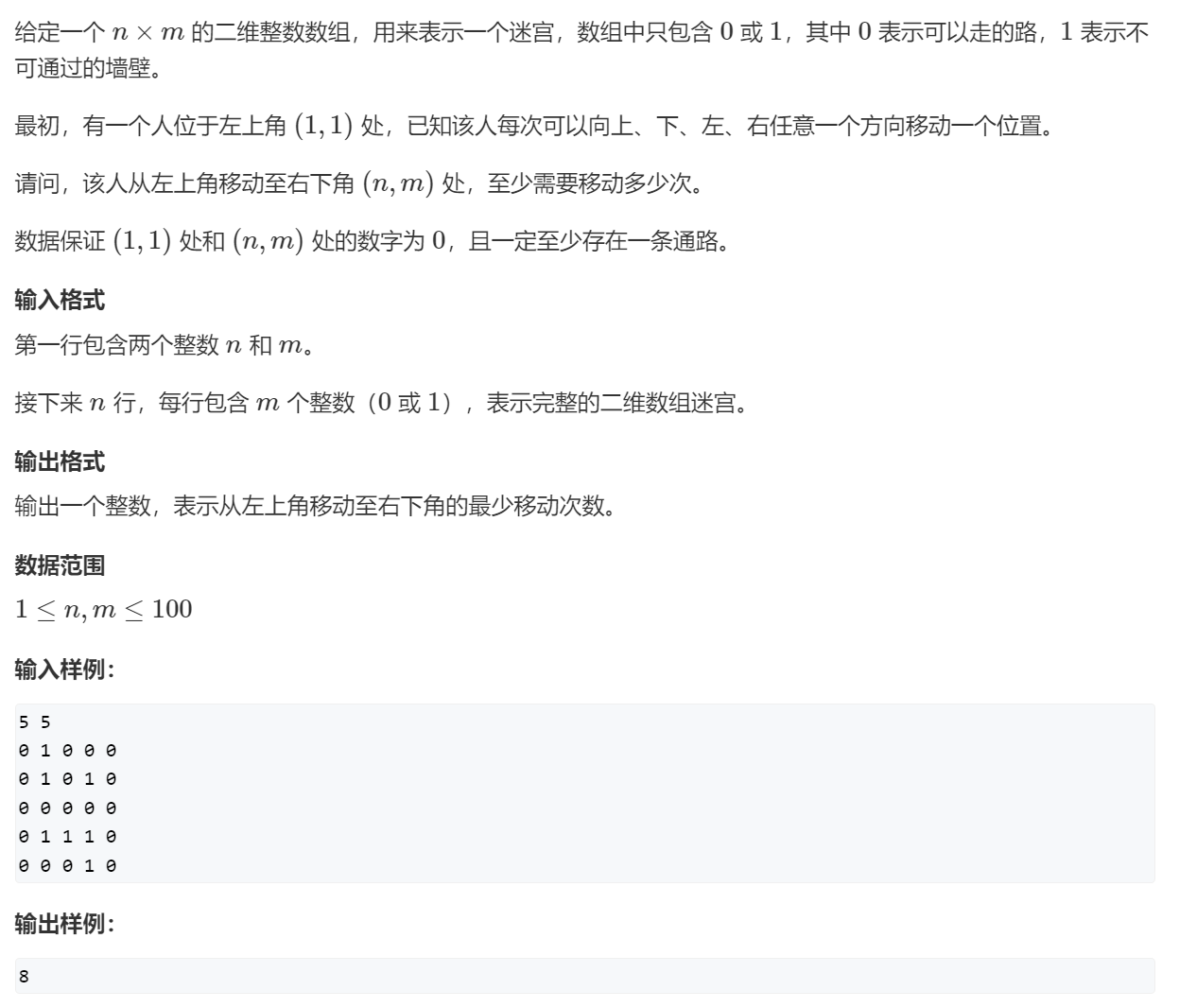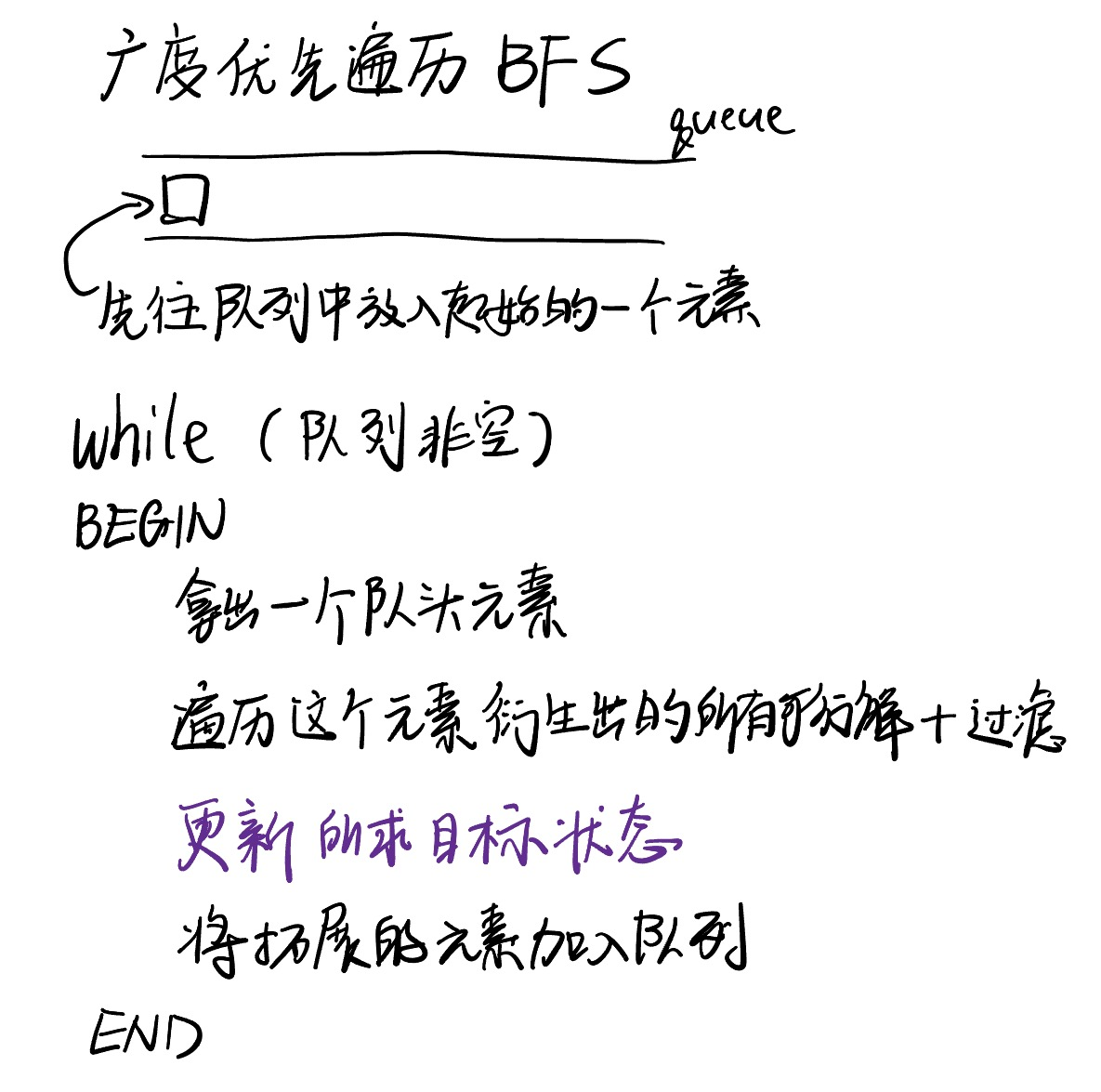BFS-走迷宫
1. 题目

简单概述:走迷宫问题,行走的方向是上下左右。这个迷宫内有些格子不能走,想要从迷宫的左上角走到右下角,最少移动次数。这道题属于最短路问题(求出到达一个点的最短路径)。
思路分析
为什么使用BFS求到的答案能保证是最短的路径?
因为BFS是逐层搜索的,能把当前层的所有可能值包括进来,每一层的值是上一层的值加一。
更新目标状态的内容是什么?
d[x][y] = d[t.first][t.second] + 1
如何标记当然位置已经走过?
首先,d数组全部被初始化为-1。当d中的值被修改为距离起点的长度时,表示这个位置已经被走过了。
BFS 模板

代码实现
#include<iostream> #include<queue> #include<algorithm> #include<cstring> using namespace std; typedef pair<int, int> PII; const int N = 110; int n, m; int g[N][N], d[N][N]; queue<PII> q; int bfs() { memset(d, -1, sizeof d); d[0][0] = 0; q.push({0, 0}); while (q.size()) { auto t = q.front(); q.pop(); int dx[4] = {0, 1, 0, -1}, dy[4] = {1, 0, -1, 0}; for (int i = 0; i < 4; i++) { int x = t.first + dx[i], y = t.second + dy[i]; if (x >= 0 && x < n && y >= 0 && y < m && g[x][y] != 1 && d[x][y] == -1) { d[x][y] = d[t.first][t.second] + 1; q.push({x, y}); } } } return d[n - 1][m - 1]; } int main() { cin >> n >> m; for (int i = 0; i < n; i++) for (int j = 0; j < m; j++) cin >> g[i][j]; cout << bfs() << endl; return 0; }



【推荐】国内首个AI IDE,深度理解中文开发场景,立即下载体验Trae
【推荐】编程新体验,更懂你的AI,立即体验豆包MarsCode编程助手
【推荐】抖音旗下AI助手豆包,你的智能百科全书,全免费不限次数
【推荐】轻量又高性能的 SSH 工具 IShell:AI 加持,快人一步